Jeff Campbell returned to The Art of VFX to tell us about Spin VFX work for UNDERWORLD AWAKENING. He is joined by George Macri, VFX Producer, and Ahmed Shehata, CG Supervisor. They explain in detail their work on this film.
How did Spin VFX got involved on this show?
Jeff Campbell, VFX Supervisor // We got involved quite late in the game and had only 12 weeks to do some huge shots in Stereo!
How was the collaboration with Production VFX Supervisor James McQuaide?
George Macri, VFX Producer // We dealt exclusively with James McQuaide who was both an Executive Producer and the Visual Effects Supervisor. The initial discussions centered on the opening shot of the film which needed to set the tone. The humans are essentially “exterminating” the vampires and the lycans from the old city. In the opening shot we needed to see humans executing lycans & vampires, dragging them out of buildings and throwing them from the balconies and setting fire to these “body piles”. In addition, it needed to be clear that there was a new city surrounding the old city, which was burning.
The subsequent shots would be various types of city extensions, whether burning old city, new city or a combination of both. In terms of the building styles, the old city look was on the gothic side, which the new city required extensive buildings in the Brutalist style of architecture for a much more visually aesthetic than just your typical skyscraper.
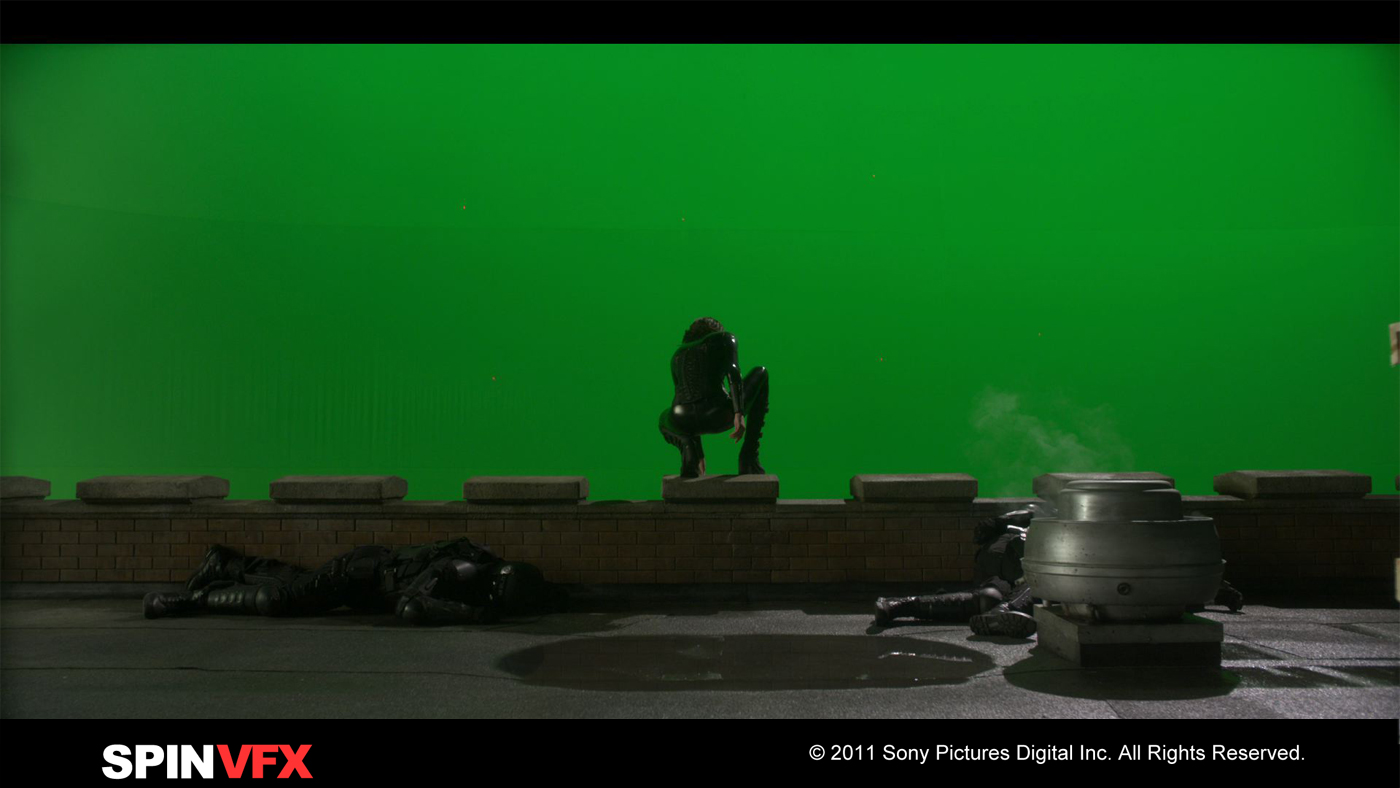 |
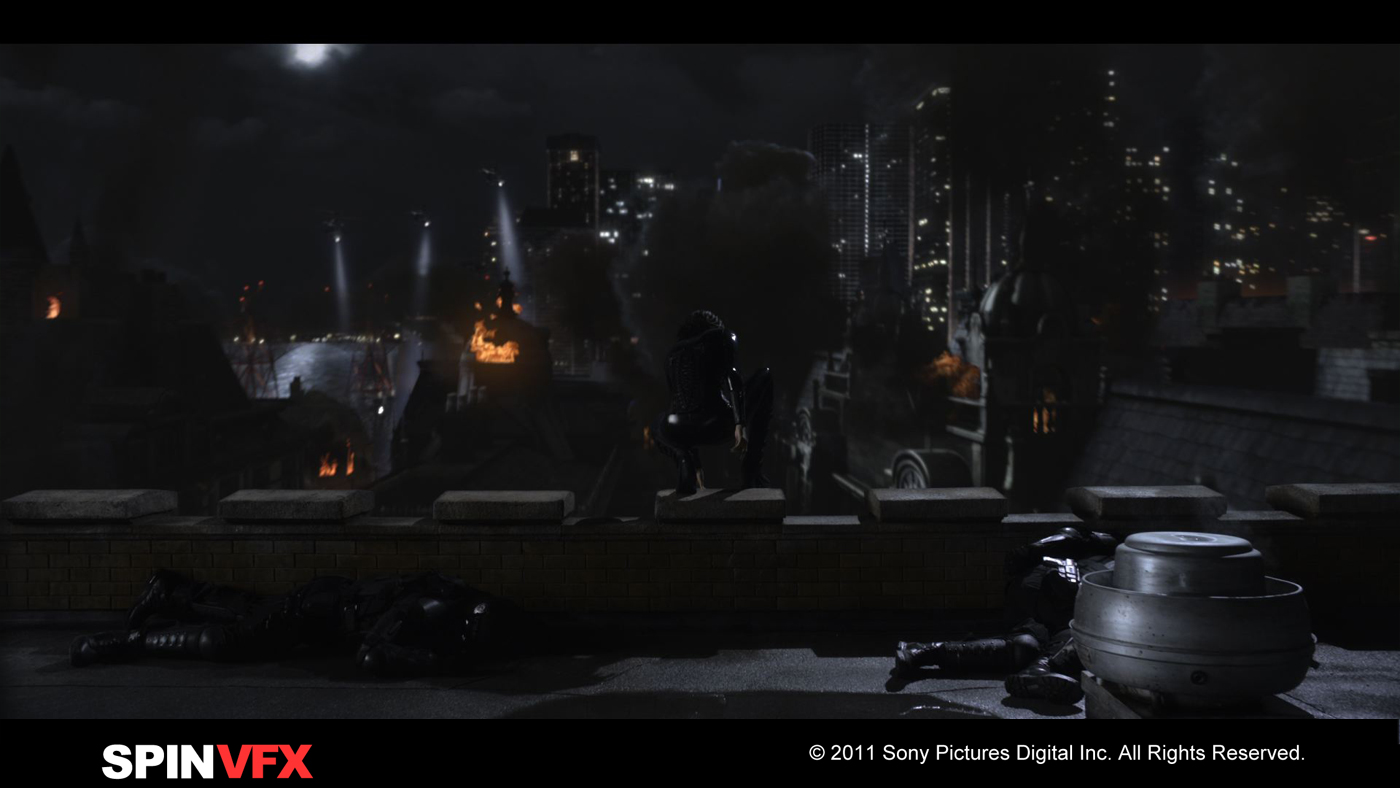 |
What have you done on this movie?
Jeff Campbell, VFX Supervisor // SPIN supplied the opening and the closing sequences, the Eve Vampire face shots and the city set environment extensions.
The biggest task was to build the city that the movie takes place in, to look like Budapest but surrounded by newer buildings, a Brutalist style of architecture.
We had one shot where Selene is running across a bridge between two buildings that required a digi-double. A laser scan of her was provided in which we rigged, textured and animated her in Autodesk Maya. Joe Alters Shave and Haircut was used for hair.
We ended up doing 66 city shots and 54 Eve shots. The Eve shots (or Subject 2), involved vampire face augmentations and transitions from and to human.
The plates were shot in stereo with a couple of Red Epic’s. We received and delivered 2.5K. It was really nice clean footage to work with. There were the expected anomalies you get from shooting through a mirror in one eye but all in all, the Epic footage was really good to work with. Typically you would build mono versions for creative approval but, to save time, even first versions were in stereo so we could address any stereo issues first hand. There weren’t too many plates that needed Ocula.
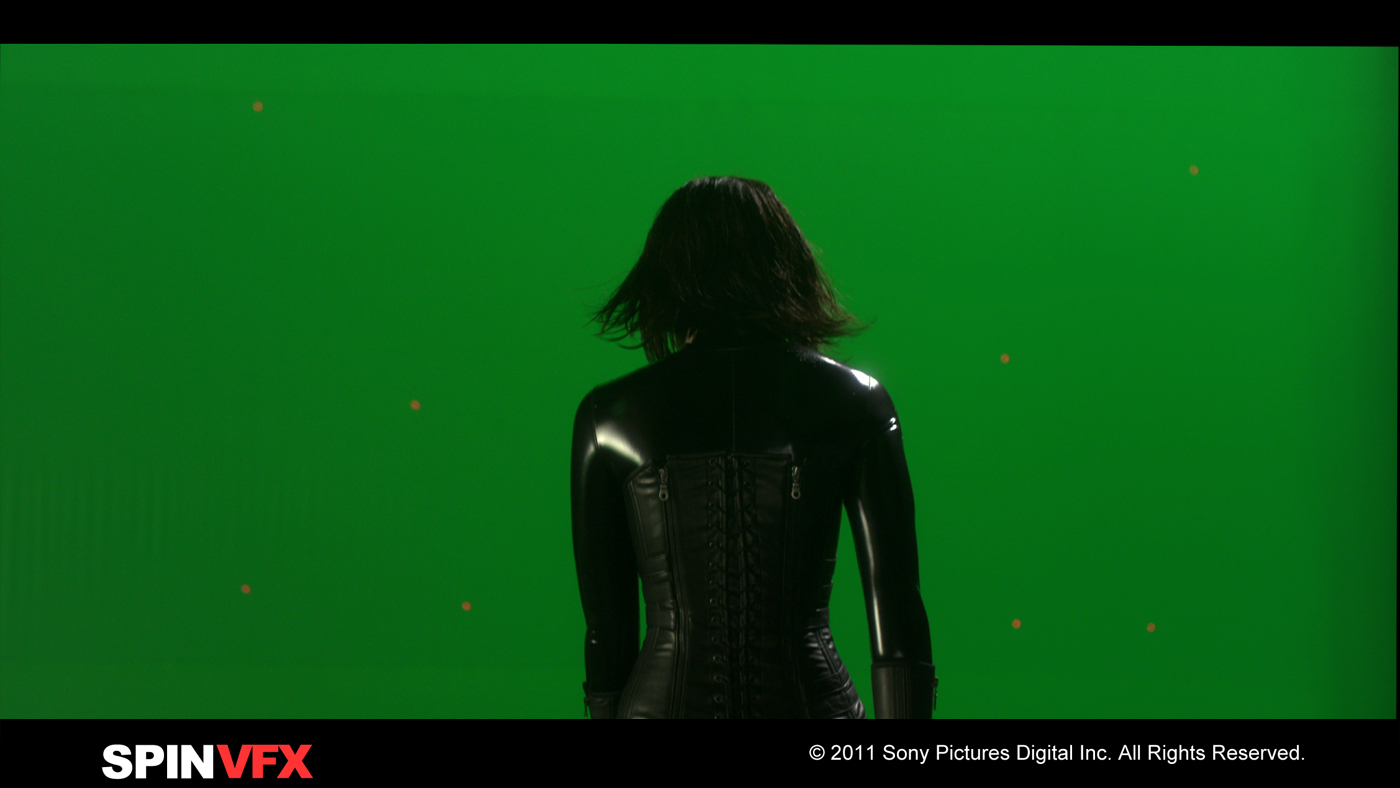 |
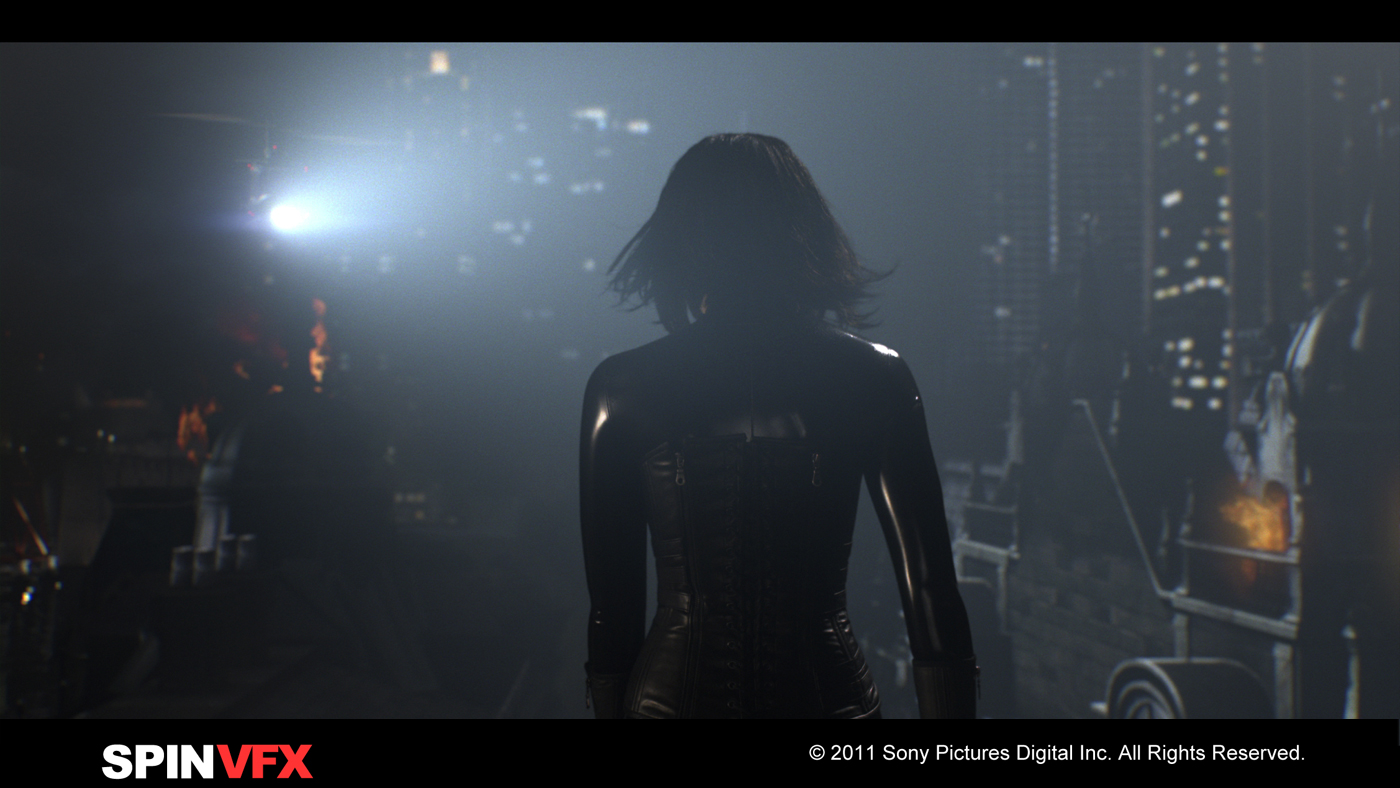 |
Can you tell us more about the impressive opening shot and the closing shot?
Jeff Campbell, VFX Supervisor // The opening sequence is so important to the story. There is so much going on in it, we really did not have the time to get any second chances to get it right so it had to be planned extremely well.
Production provided a previs of the opening sequence for timing and expectations. It was very ambitious with an extreme camera move starting out straight down at ground level and pulling back up over a building to reveal Selene examining all of the devastation around her. We added cg body pile fires, cg guards with flamethrowers, cg lycans and vampires being tossed out of windows, cg victims being executed in the streets and cg helicopters searching the city; all in an extremely heavy cg environment. We brought as much geometry into Nuke as possible but the composite was taking 16 hrs to render at one time. Fire fluid sims were done in Maya and rendered in 3ds Max using FumeFX. City models were built in Maya and rendered in V-Ray. Not the ideal shots you’d want to deal with on a 12 week schedule. The old bag of tricks you’d usually use to speed things up is not available because you can’t get away with much in stereo.
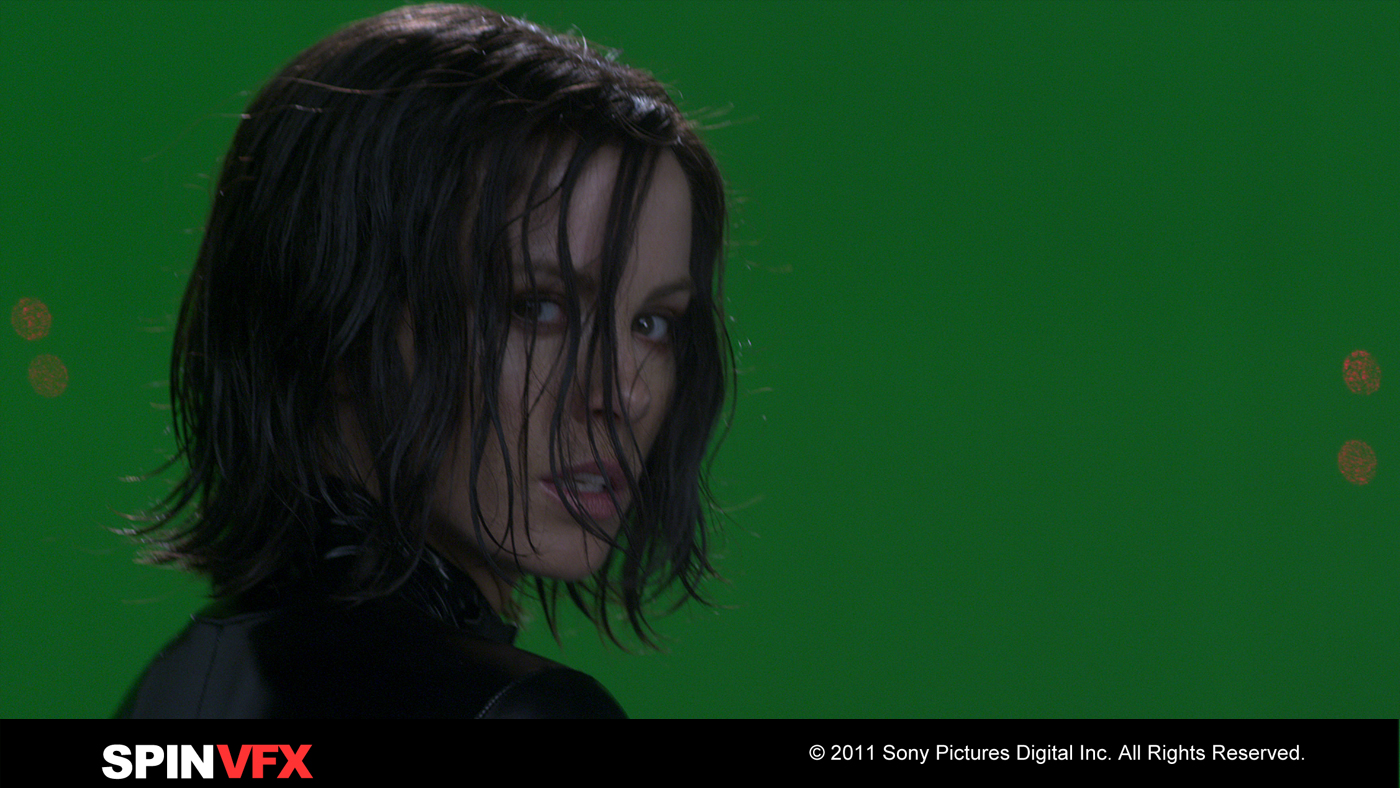 |
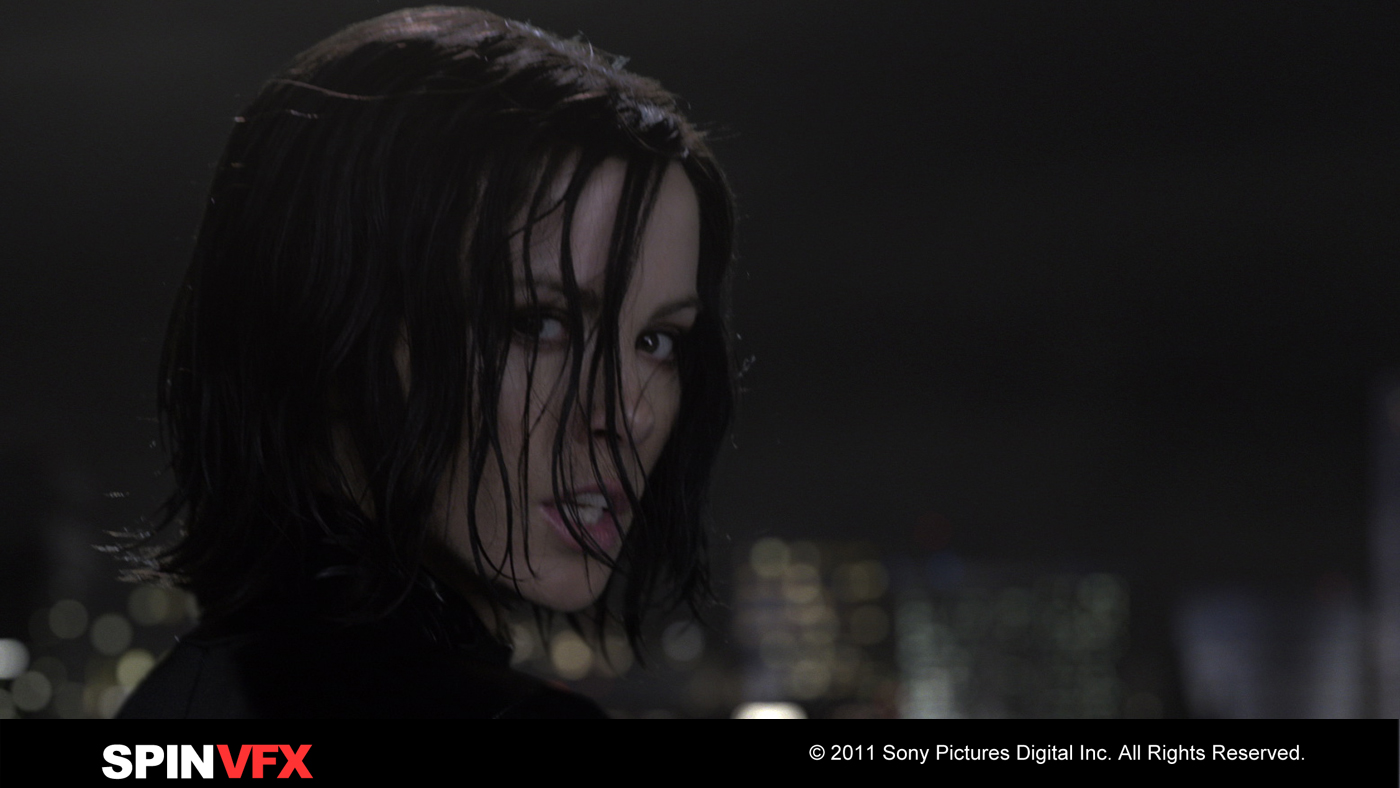 |
How did you create the city addition?
Ahmed Shehata, CG Supervisor // UNDERWORLD AWAKENING cities required a specific style of buildings and street layouts for stereo. SPIN used a mapping system for the city sections that divided each area into 6 zones organized by type such as old and new building styles. Designing a custom pipeline and proper asset workflow was essential to connect all departments from art to 3D to compositing. You still had to design all those buildings individually and our team developed several tools to manage the city assets. This ranged from collecting textures based the structure to generating projection camera shaders based on city sections. Techniques were applied to split matte paintings into separate street part maps in order to overcome parallax shift in projections, accommodate the different shot angles and look development needs.
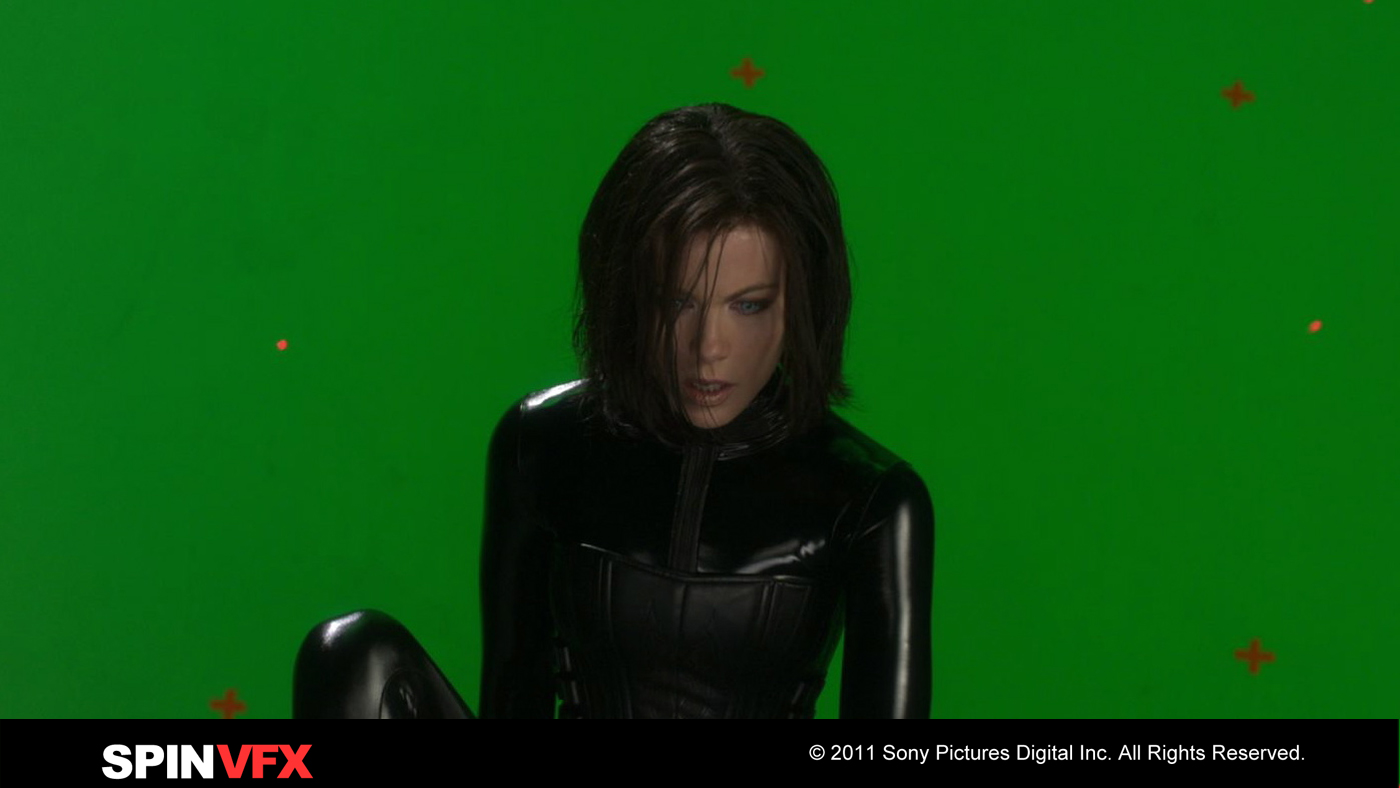 |
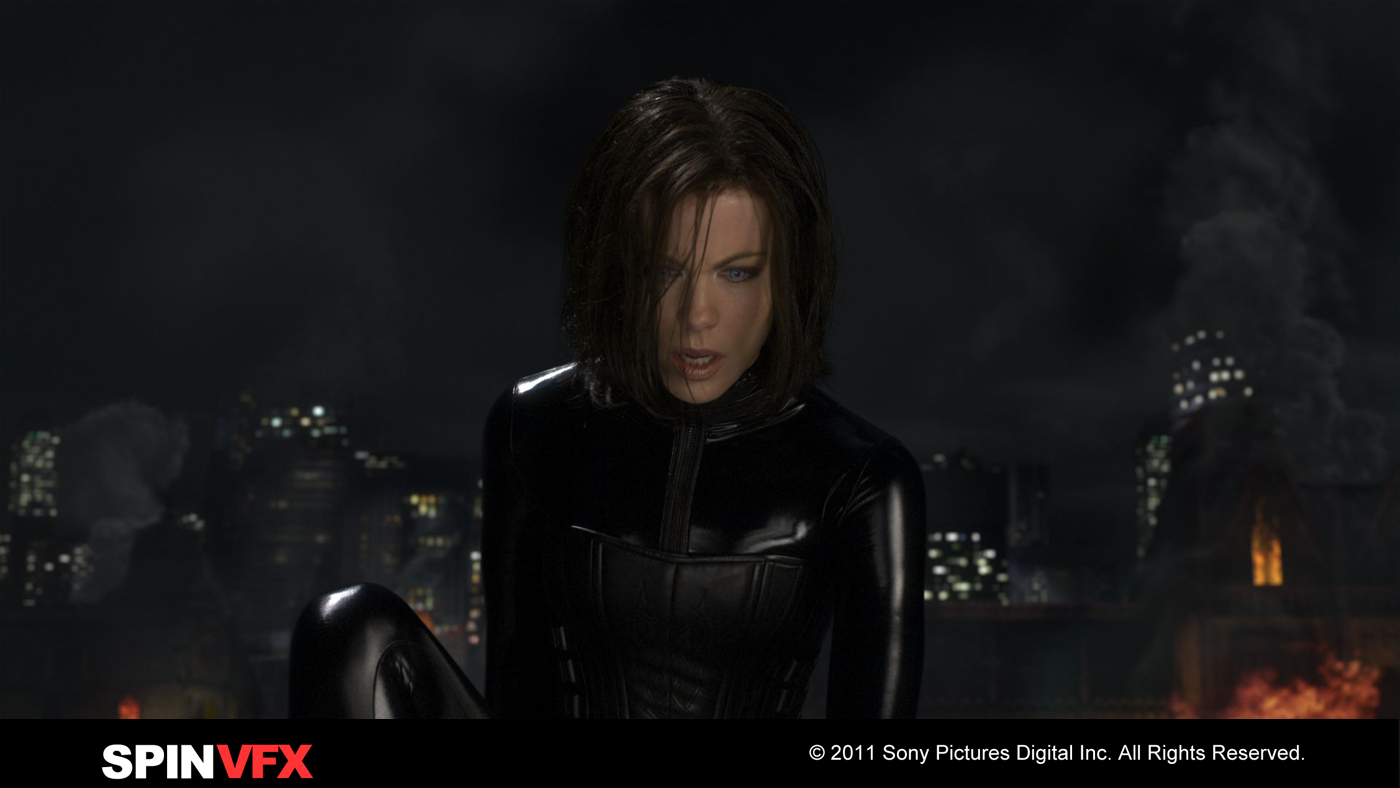 |
What references did you receive for those buildings?
Jeff Campbell, VFX Supervisor // To make the city look unique to the movie and not similar to Vancouver where it was shot, we were required to add our Brutalist buildings as much as possible. We had quite a few built but the client had a hero building that is in almost every shot. The great thing about Brutalist architecture is that the building’s tend to look different from every side so in order to get more variations we would just rotate the buildings as needed. For the shots that had a slight camera move, we rendered a lit frame from Maya, sent this render to a matte painter to add all the details and then re-projected back onto the same geometry in Nuke. We would also provide all matte passes needed to isolate areas in Nuke such as window reflections, glows, key, fill lights as well as street level lighting like store fronts, street lights and cars. Having control of lighting and textures in Nuke’s 3D space has many creative advantages.
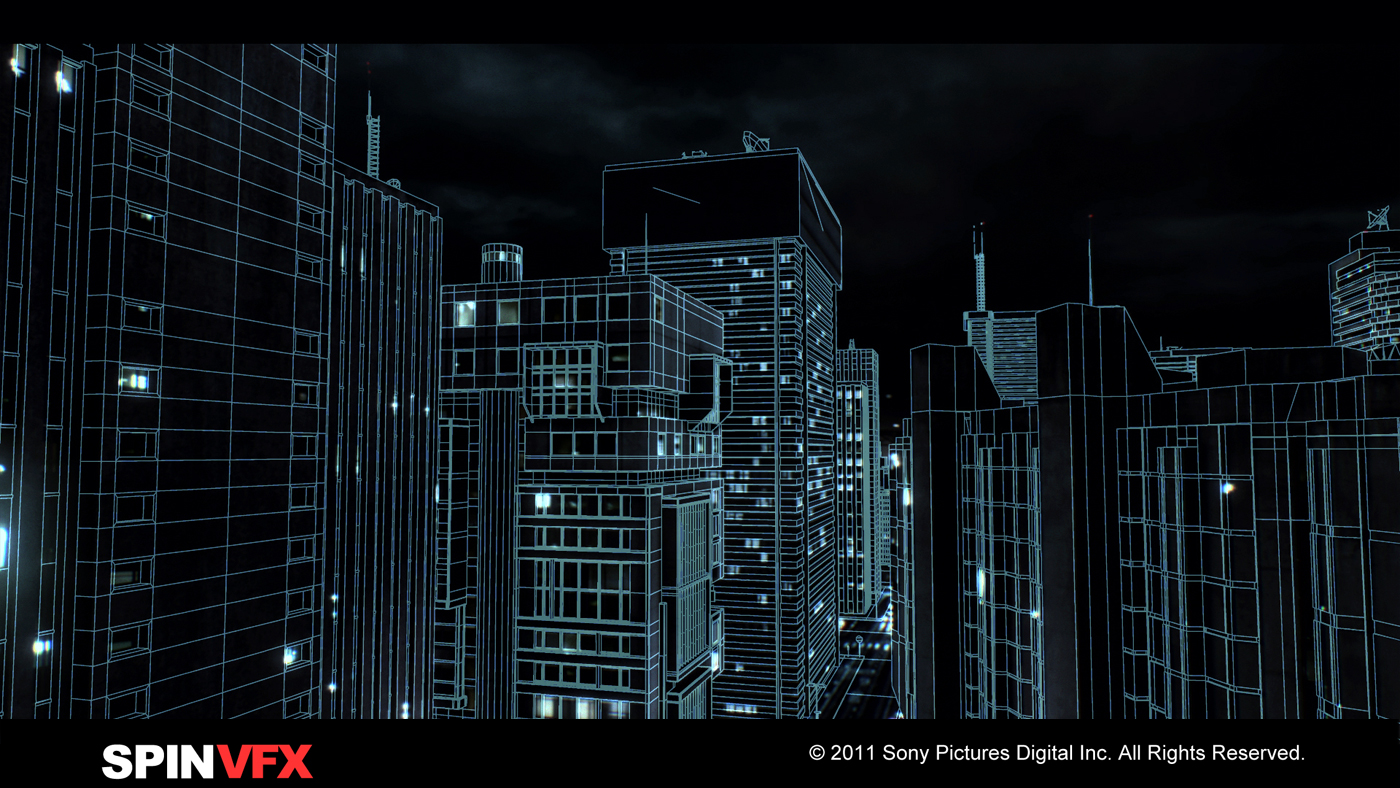 |
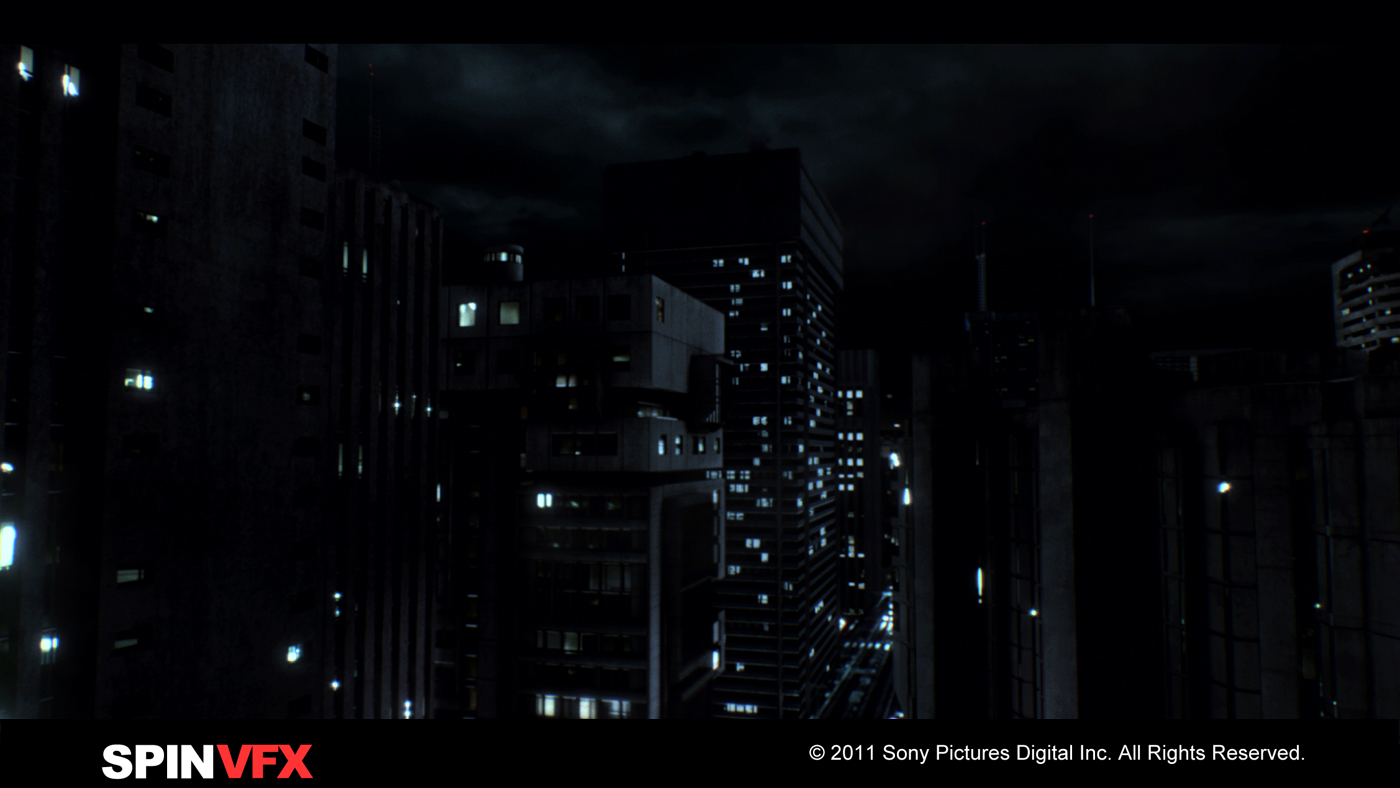 |
Can you tell us more about the Eve enhancements? Was there some makeup involved or is it full CG makeup?
Jeff Campbell, VFX Supervisor // Eve was required to have a combination of vampire features like her mother (Selene) and lycan features like her father (Michael). During look development our goal was to sort out a hybrid look that was menacing yet attractive. The shots where Eve transforms are where you see more of the Michael influence as her face momentarily takes on a more animalistic shape. We used 3 blend shapes during her human to lycan to vampire transformation. Veins were also added to signify an increased blood flow that initiated her transformation. The veins and her face were projected on to a geometry .obj sequence that was fed into Nuke.
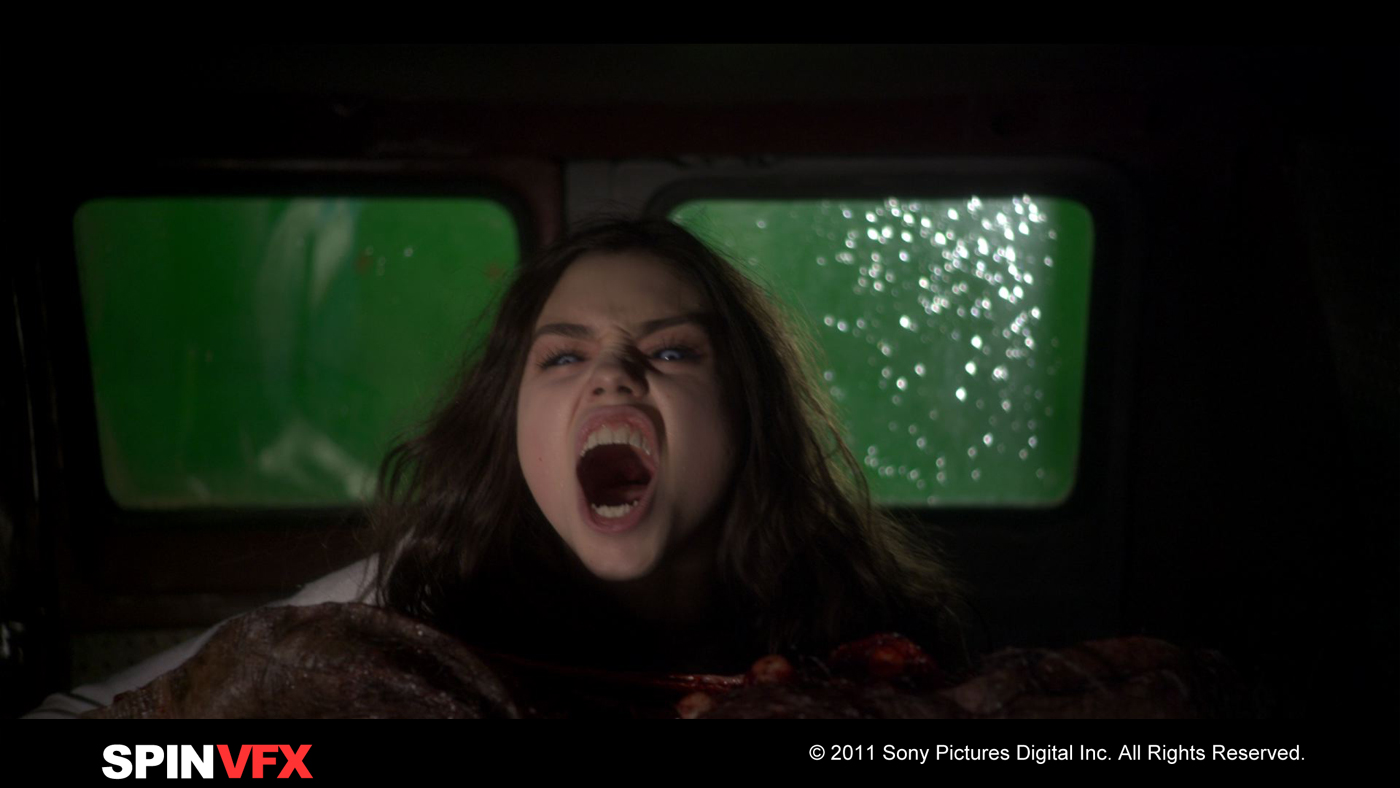 |
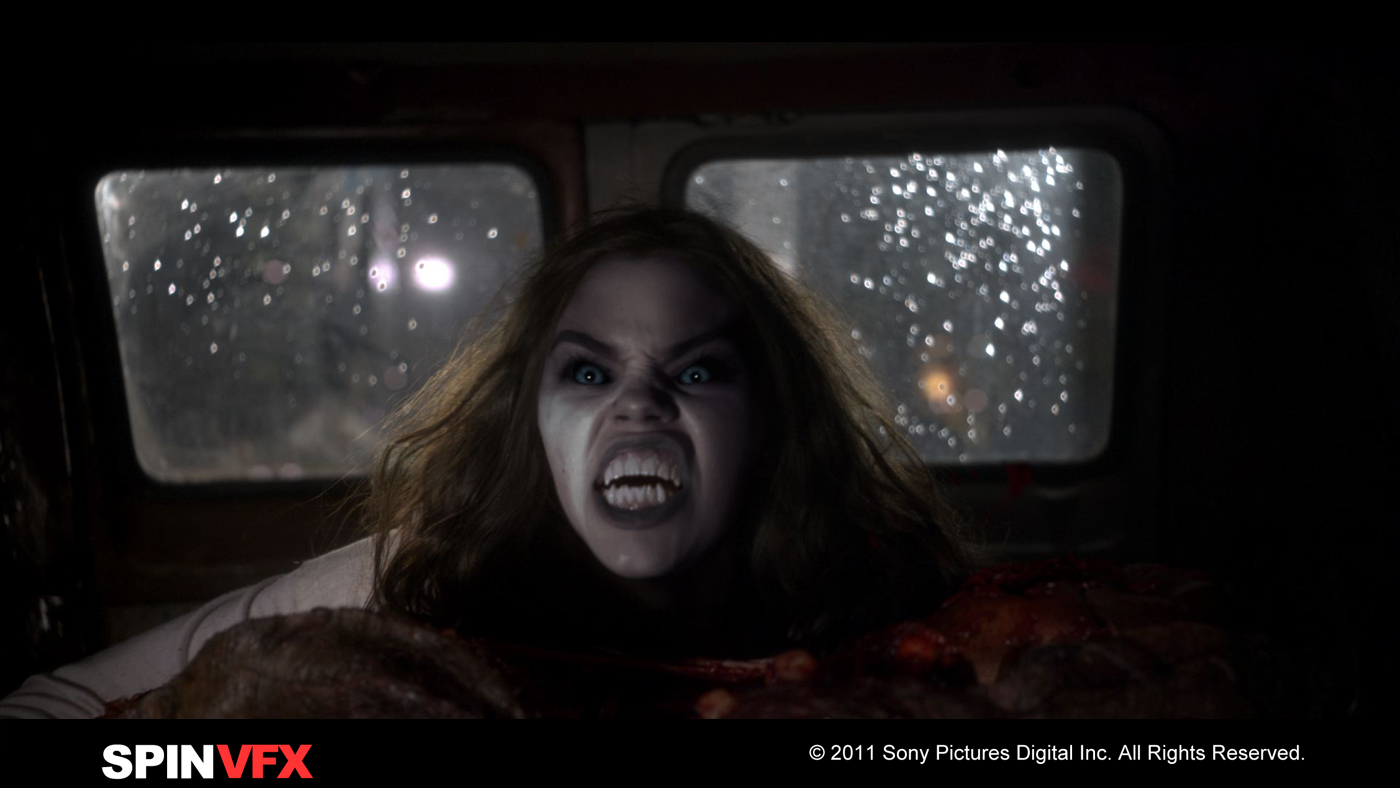 |
Most of the shots involved manipulating her live action makeup by tracking a series of mesh warps in order to shape her eyes and brow. We also gave Eve new irises, changed her skin tone and added cg fingernails.
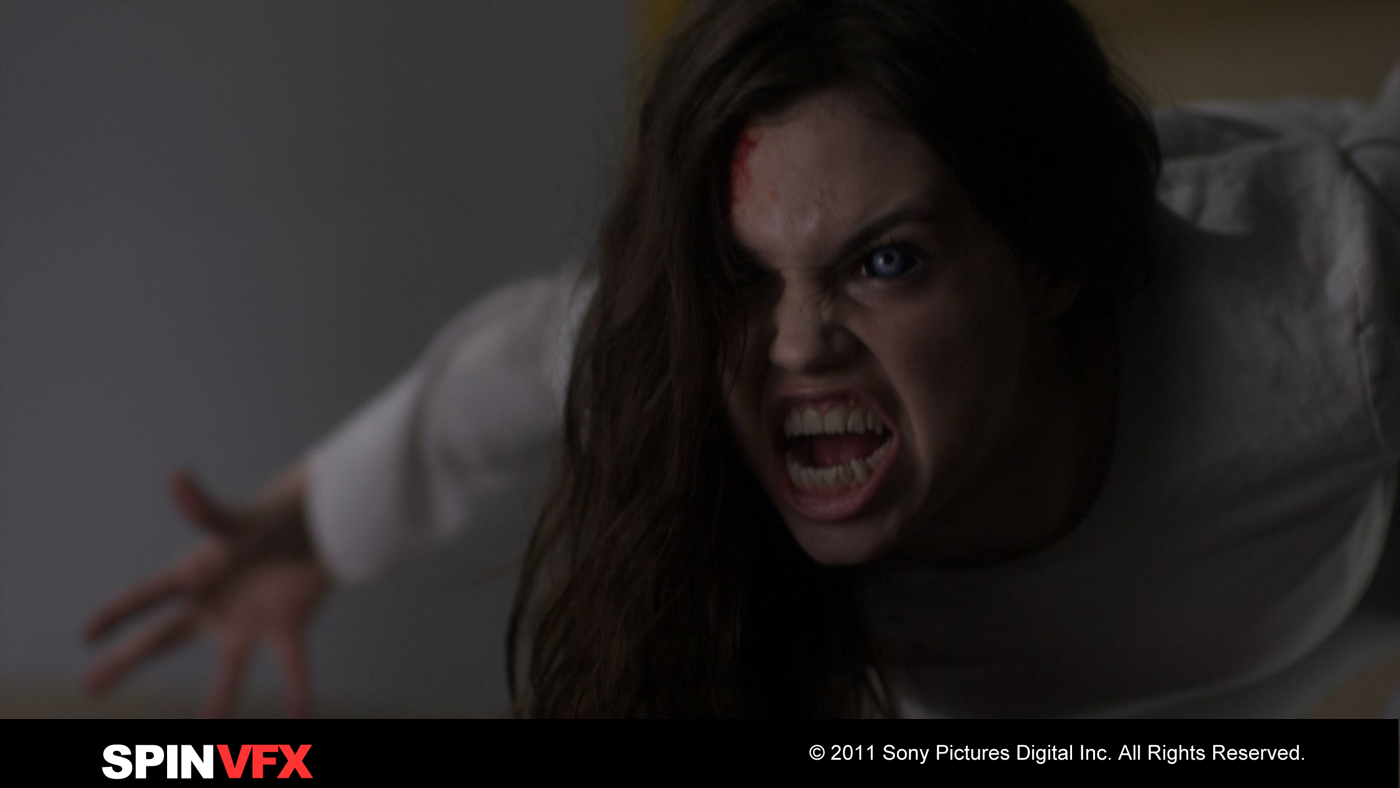 |
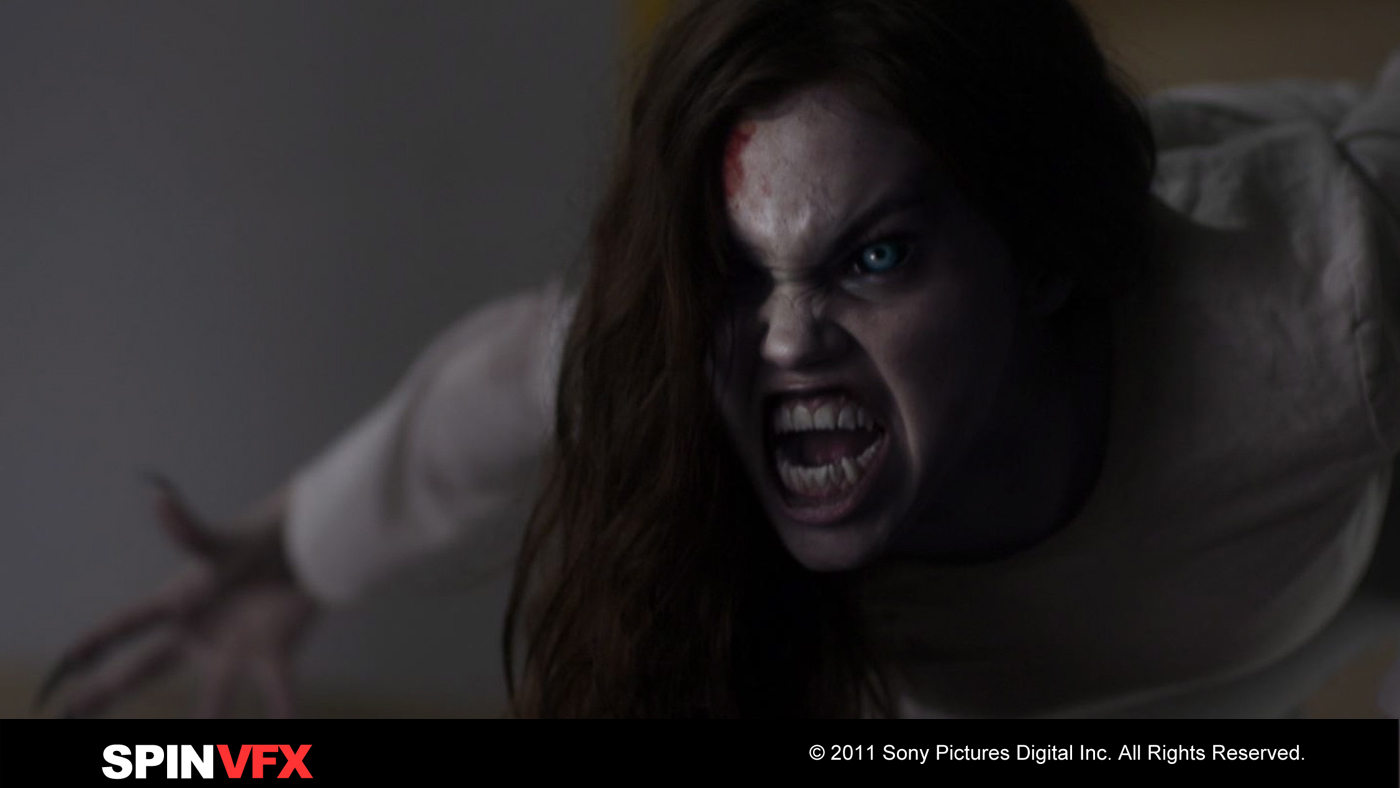 |
The movie was shot in stereo. How did you manage this aspect?
George Macri, VFX Producer // We were concerned before starting that there wouldn’t be enough time to deal with the typical color and position offsets that you’d see with stereo plates. Going through heroic efforts to deal with plate corrections was something we thought would be a schedule-killer. When the plates were turned over however, we immediately did a stereo spotting session and we were all pleasantly surprised to see just how great the footage looked. In the end, we did some plate corrections using Occula on a VERY small number of shots.
As far as the rest of the pipeline, a stereo camera was used in CG to create all of the elements and the comps were setup in stereo within Nuke. First pass blocking and comps were approved as a mono quicktime and subsequent comp renders were stereo from that point forward. I think the compositors took the brunt of the stereo aspect in all honesty because some of the tricks you can do in 2D just plain don’t work in a stereo comp!
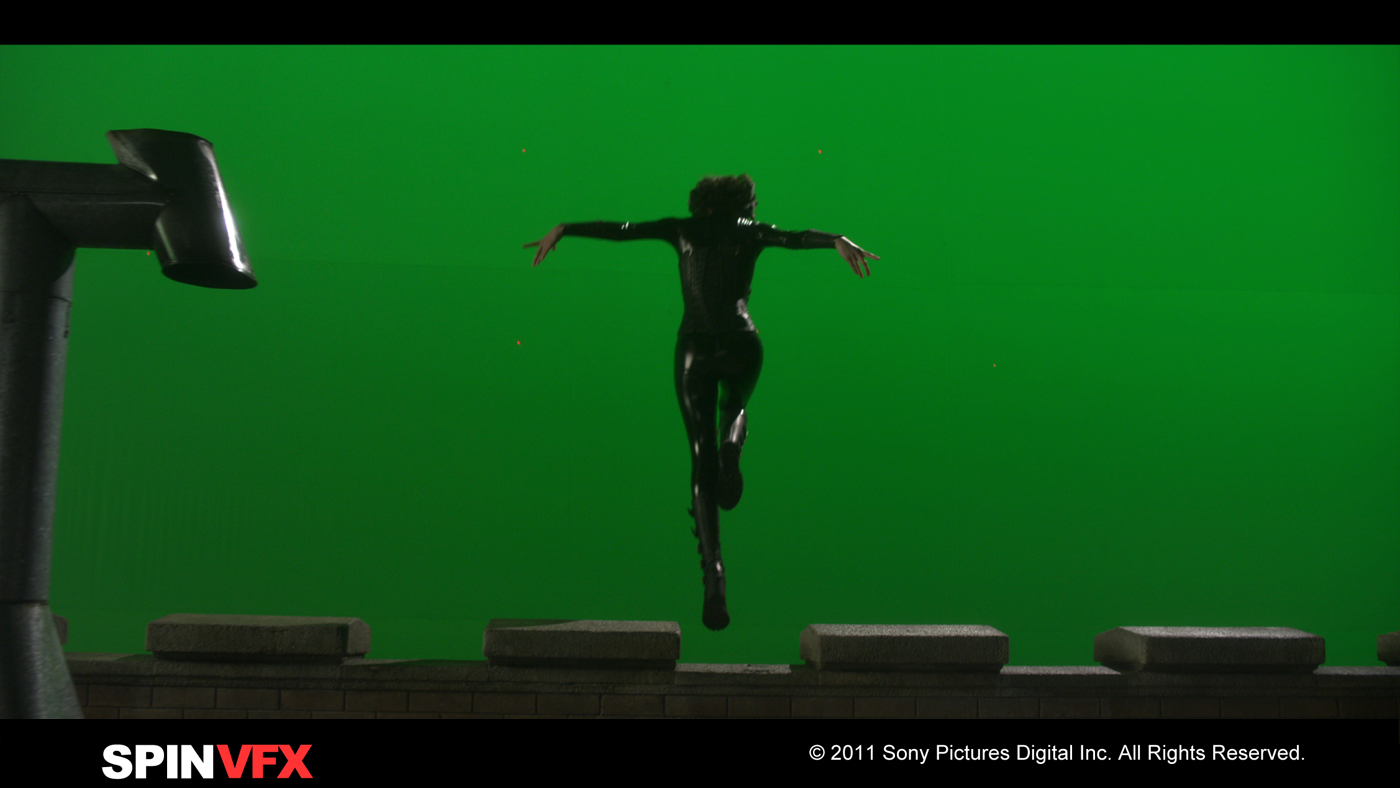 |
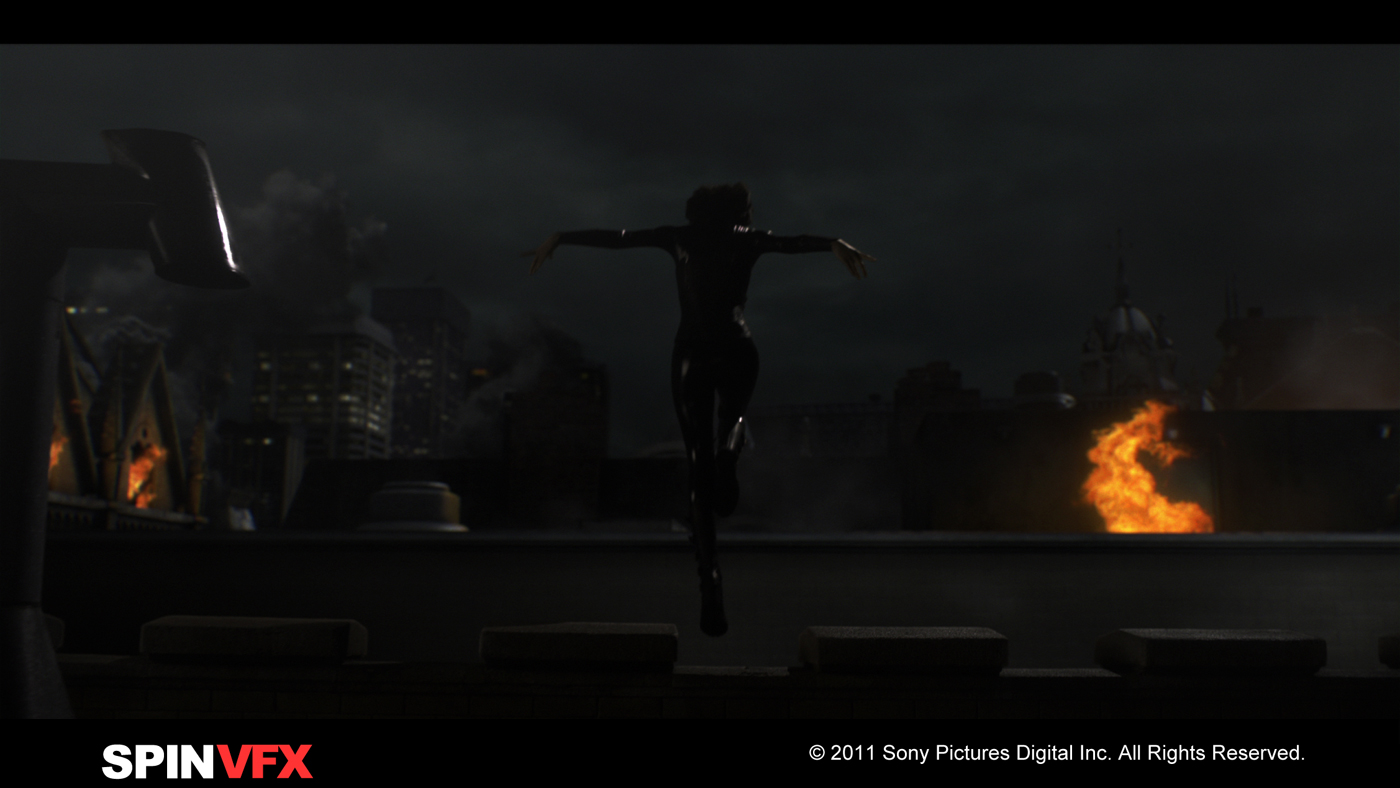 |
What was the biggest challenge on this project and how did you achieve it?
George Macri, VFX Producer // The timeframe and stereo requirement without a doubt were the most challenging. The shots themselves were difficult enough, but it was a huge exercise in pipeline and resource management. We were lucky enough to have a very talented and seasoned crew on both the CG and compositing end. Almost everyone had extensive experience in stereo feature vfx projects.
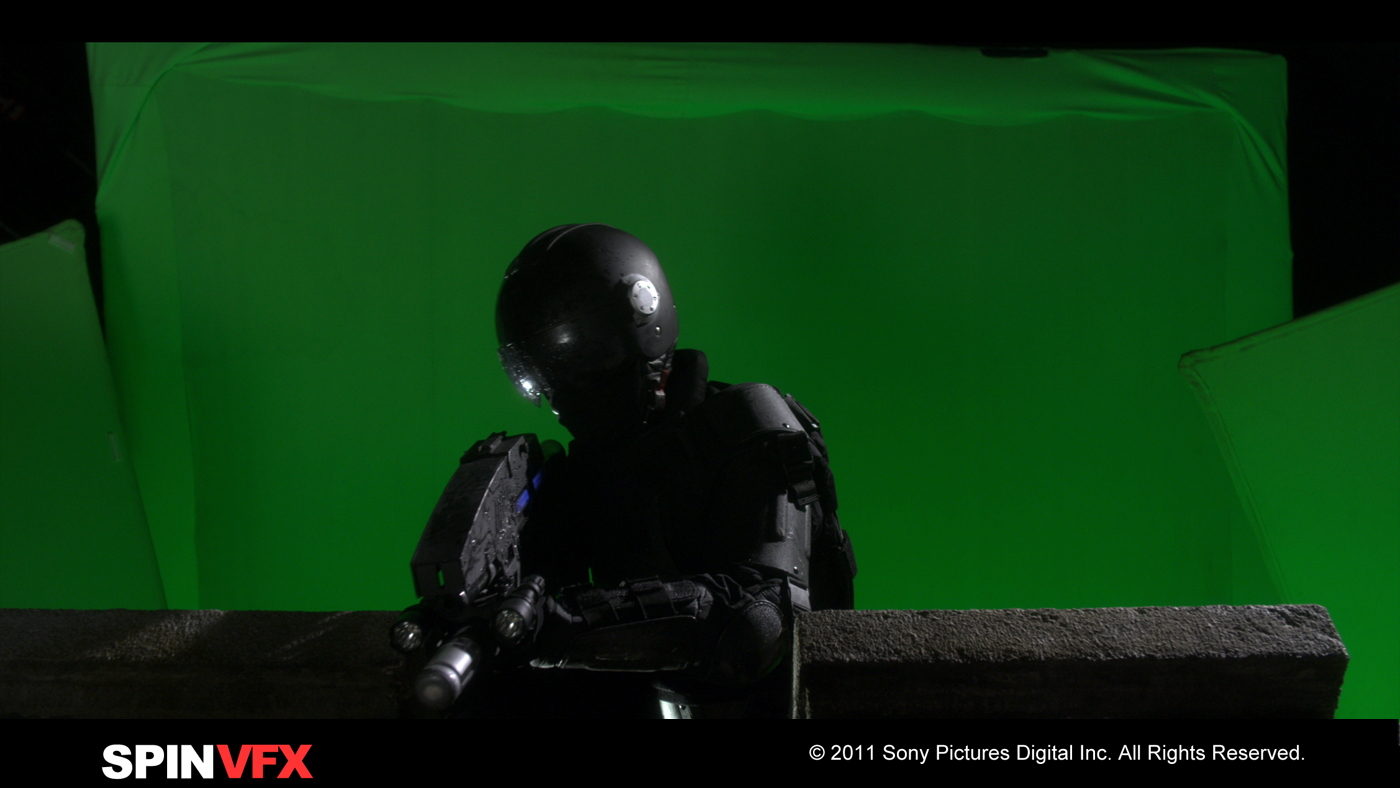 |
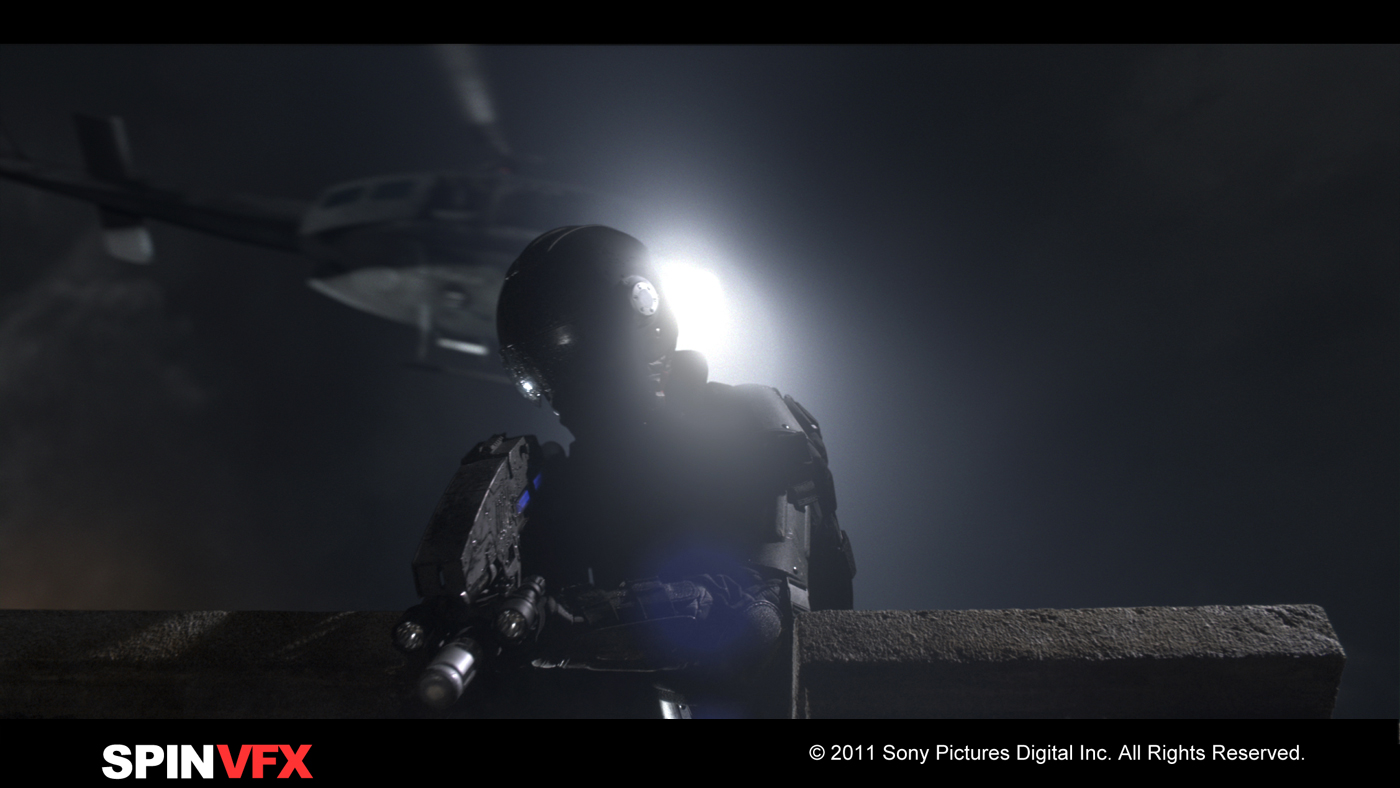 |
Was there a shot or a sequence that prevented you from sleep?
Jeff Campbell, VFX Supervisor // I would say the opening shot. It was a so huge and important to the story. We never stopped working on it from start to end in our short 12-week schedule.
How long have you worked on this film?
George Macri, VFX Producer // We started late September and delivered everything mid December.
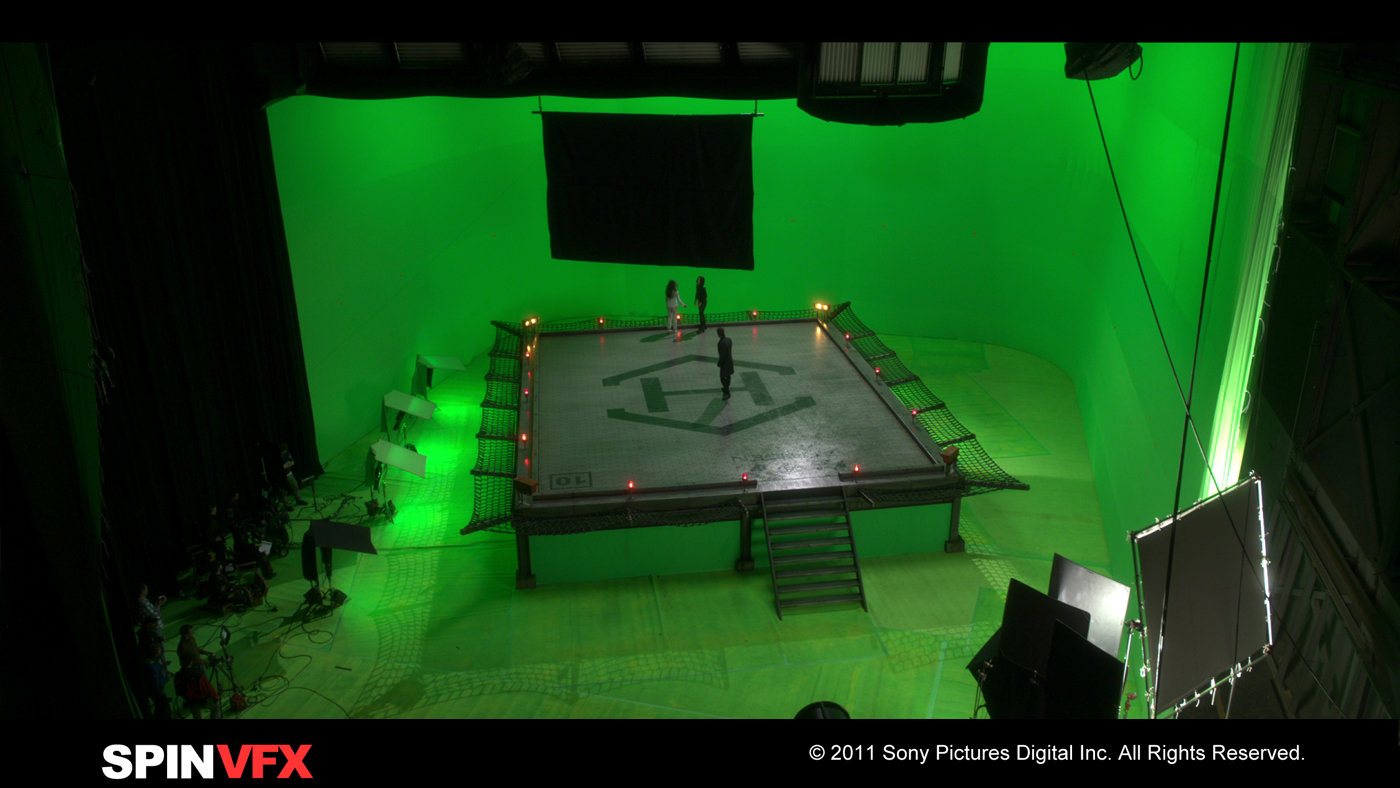 |
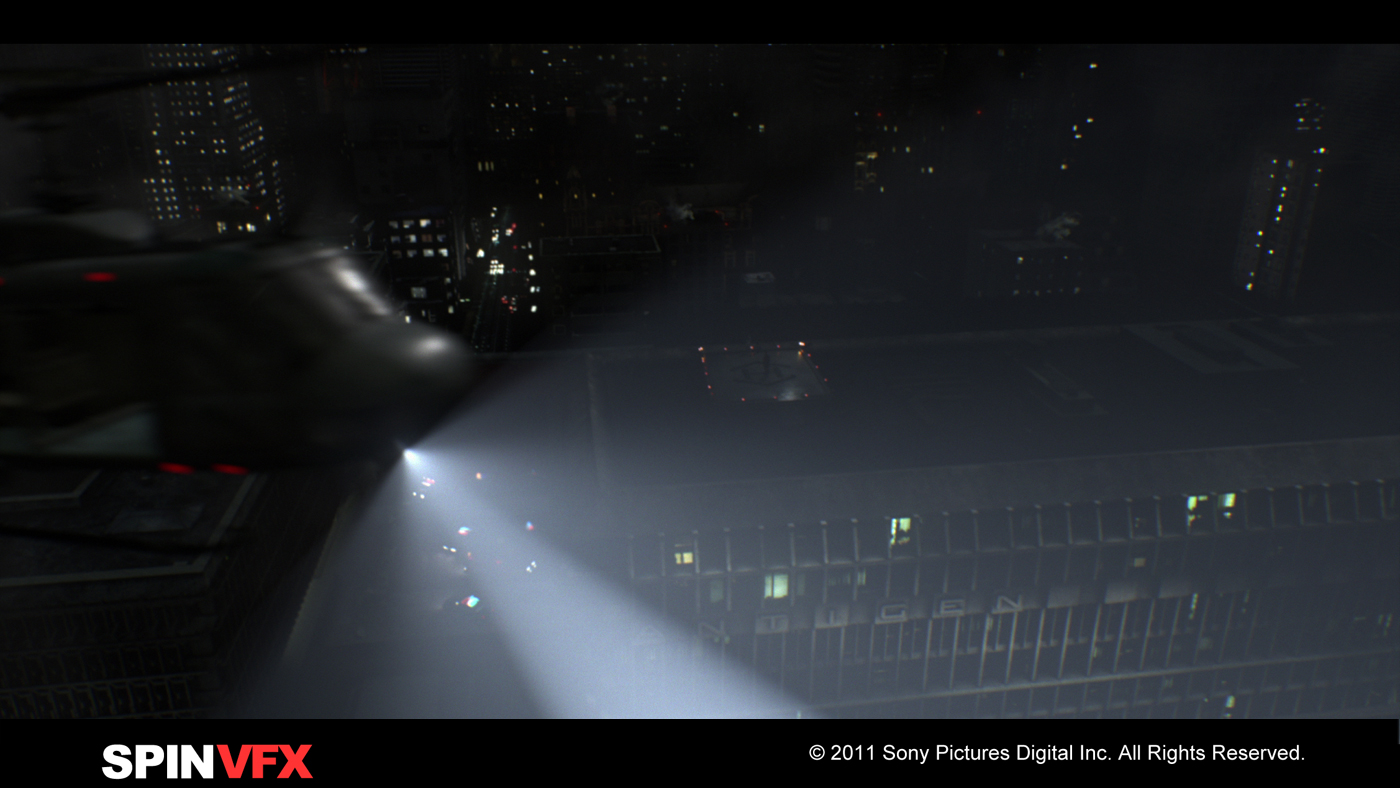 |
How many shots have you done?
George Macri // In the end it was about 66 city shots and 54 Eve augmentation shots.
What is your next project?
TWILIGHT SAGA: BREAKING DAWN – PART 2.
A big thanks for your time.
// WANT TO KNOW MORE?
– Spin VFX: Official website of Spin VFX.
// UNDERWORLD: AWAKENING – VFX BREAKDOWN – SPIN VFX
Don’t miss the great vfx breakdown from Spin VFX about UNDERWORLD: AWAKENING.
© Vincent Frei – The Art of VFX – 2012




